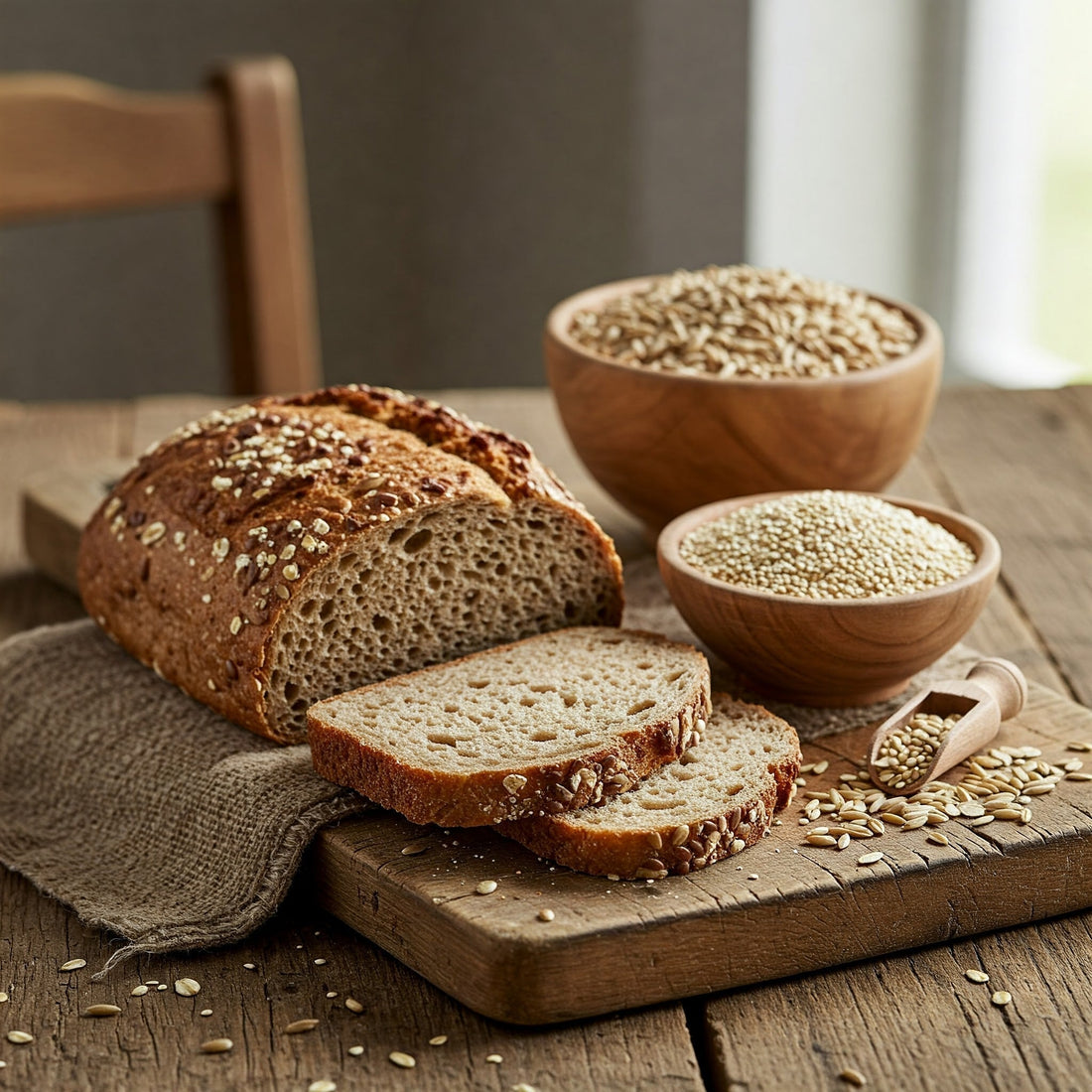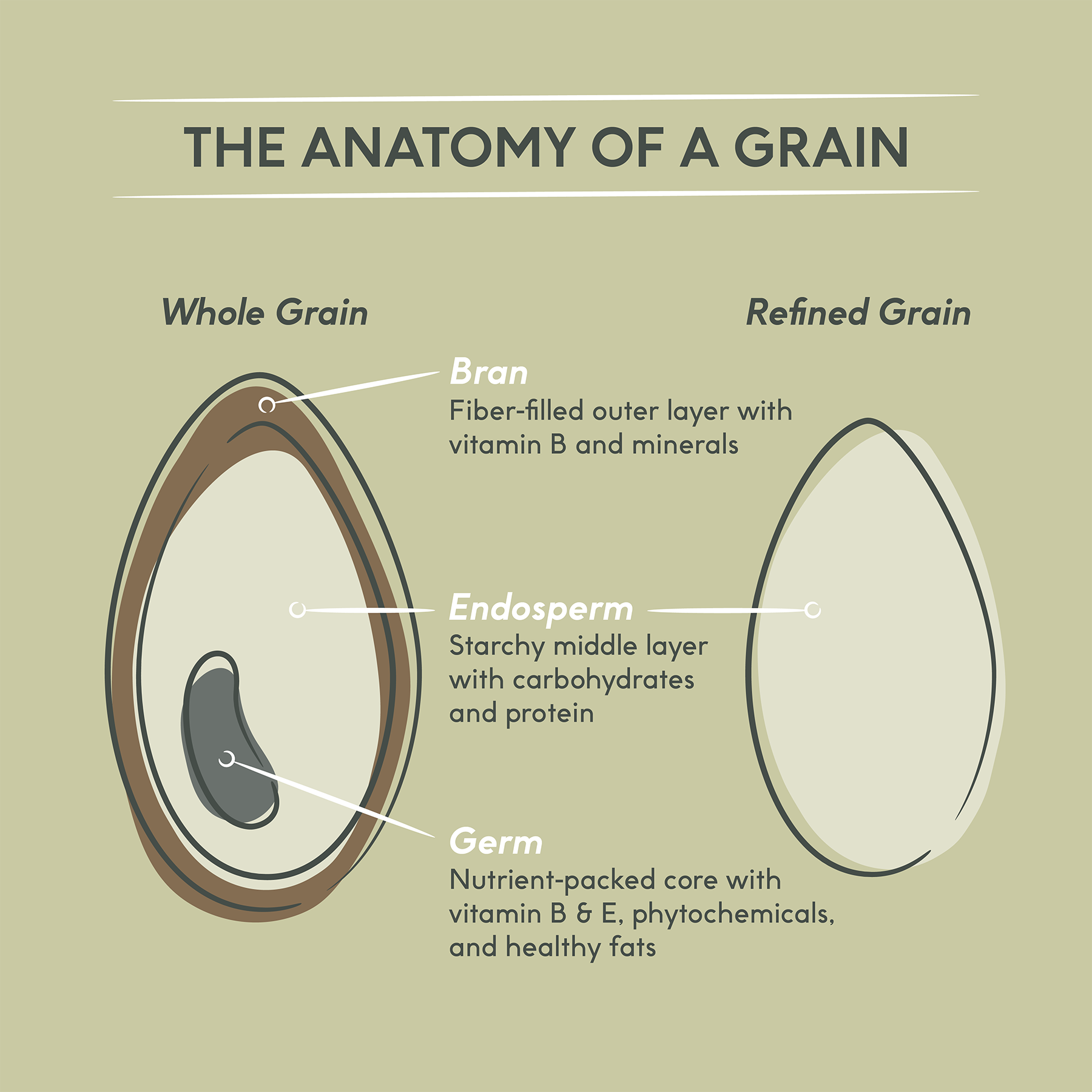
Wholegrain vs. Fibre - Which one's better?
Share
When it comes to healthy eating, wholegrains and fibre are often mentioned in the same breath. But are they the same thing? And if not, which is better for your health? In this blog, we’ll break it down for you.
What Is Dietary Fibre?
Dietary fibre is the indigestible part of plants that play a crucial role in gut health. Unlike other carbohydrates, fibre isn’t broken down and absorbed by the body but instead moves through the digestive system, supporting healthy digestion. Fibre comes in two forms:
-
Soluble fibre – Dissolves in water to form a gel-like substance, helping to slow digestion and regulate blood sugar levels. Found in oats, legumes, and fruits. Prebiotic fibre is a type of soluble fibre that directly feeds the gut microbiome.
-
Insoluble fibre – Adds bulk to stool and promotes regular bowel movements. Found in wholegrains, nuts, and vegetables.
What Is a Whole Grain?
A whole grain is a grain that contains all three of its natural components:

-
Bran – The outer layer, rich in insoluble fibre, antioxidants, and B vitamins. It protects the grain and aids digestion. This is why bran, like wheat bran, is often recommended to combat constipation.
-
Germ – The nutrient-packed core, containing healthy fats, vitamins, and minerals that support growth.
-
Endosperm – The largest part of the grain, providing energy in the form of carbohydrates, mainly starch.
Wholegrains, as their name suggests, keep all these parts intact, making them more nutritious than their refined counterparts.
What Is a Refined Grain?
Refined grains have been processed to remove the bran and germ, leaving only the starchy endosperm. This refinement is done for several reasons:
-
Longer shelf life – The bran and germ are removed because they contain oils that can cause the grain to spoil more quickly, thus removing them increases shelf life
-
Smoother texture – Refined grains produce softer, finer flour, which is preferred for products like white bread and pastries.
-
Faster cooking – White rice, for example, cooks quicker than brown rice.
However, this process strips away much of the fibre, vitamins, and minerals, reducing the overall nutritional value.
Why Are Wholegrains Considered Healthy?
Wholegrains provide more nutrients than refined grains, including:
-
Higher fibre content
-
More B vitamins, iron, and magnesium
-
Antioxidants and beneficial plant compounds
Eating wholegrains has been linked to a lower risk of heart disease, type 2 diabetes, and obesity.
Do Wholegrains Contain More Fibre?
Yes! Since wholegrains retain their bran, they naturally contain more fibre than refined grains. For example, whole wheat flour has around three times more fibre than white flour.
How Do Wholegrains Help Gut Health?
Wholegrains support gut health in several ways:
-
Prebiotic effects – They provide food for beneficial gut bacteria, promoting a healthy microbiome.
-
Better digestion – The fibre in wholegrains helps maintain regular bowel movements and prevent constipation.
-
Reduced inflammation – Wholegrain consumption has been linked to lower levels of gut inflammation.
So, Which One’s Better?
Fibre and wholegrains go hand in hand, but they aren’t interchangeable. While wholegrains are an excellent source of fibre, fibre is found in many other plant-based foods like fruits, vegetables, nuts, and legumes. To optimise gut health and overall well-being, aim for a diet rich in both wholegrains and a variety of fibre sources.
